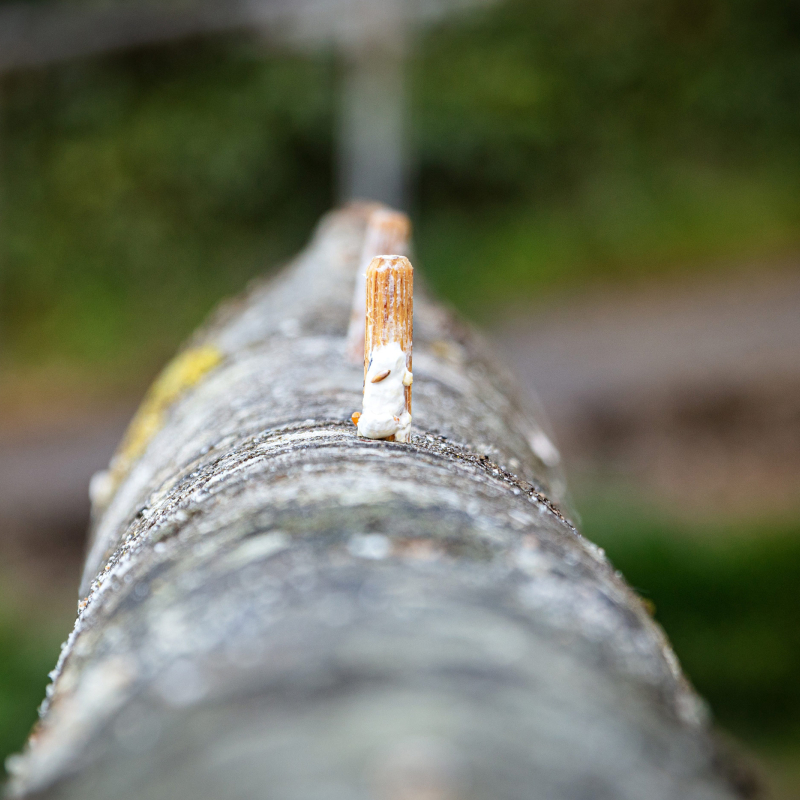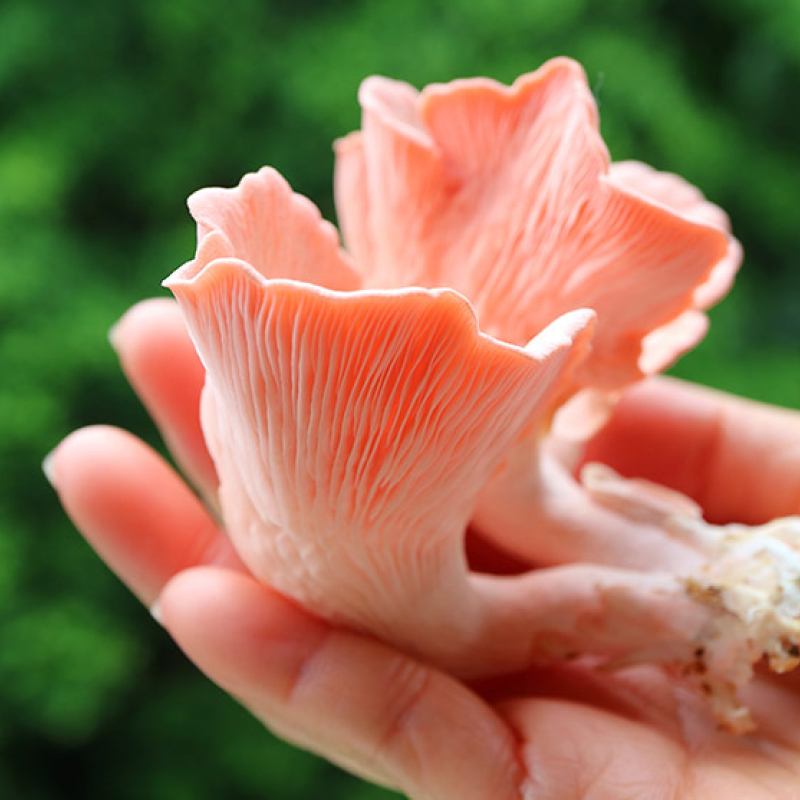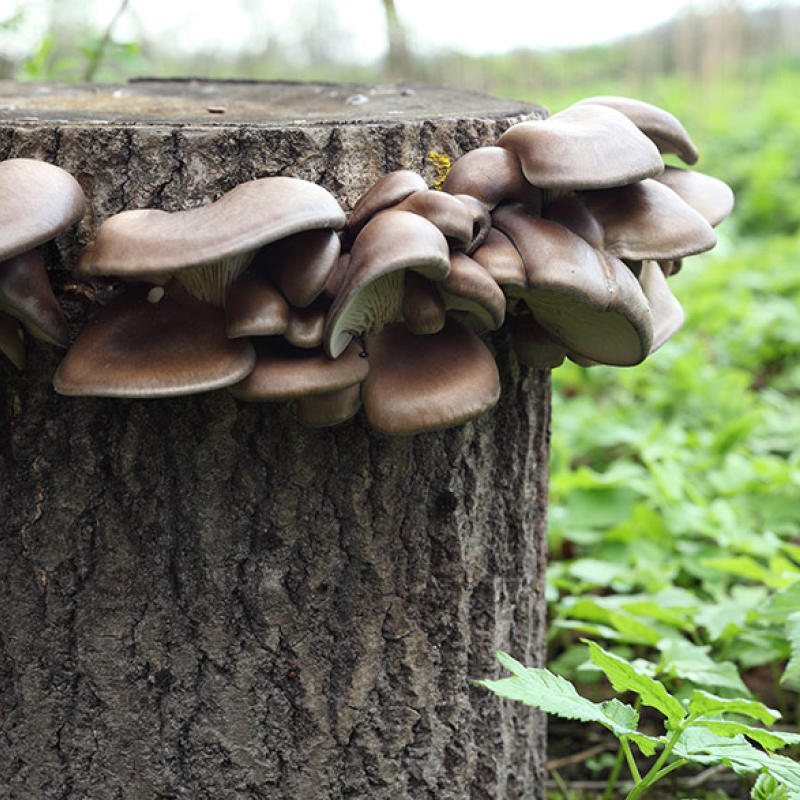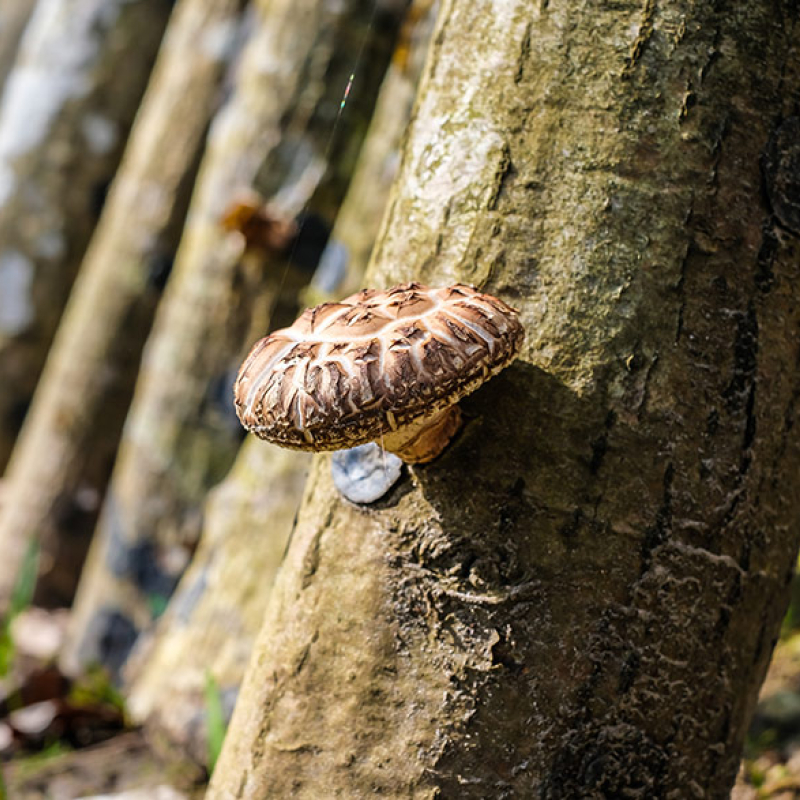Growing Mushrooms with Plug Spawn Dowels
Q : Plug spawn dowels are small wooden dowels inoculated with mushroom mycelium. They serve as a convenient way to introduce mushroom mycelium into a new substrate, such as logs or stumps, for growing mushrooms.
A : Plug spawn dowels are commonly used for growing a variety of mushrooms including shiitake, oyster, lion's mane, and more, depending on the species' compatibility with the chosen substrate.
A : Hardwood logs or stumps are the most common substrates for plug spawn dowels. Oak, maple, beech, and other hardwood species are suitable. The logs should be freshly cut, preferably within a month or two before inoculation.
A : Mushrooms grown from plug spawn dowels typically thrive in shaded outdoor environments with consistent moisture levels. Ideal conditions include temperatures between 60-75°F (15-24°C) and relative humidity around 80%.
A : The time it takes for mushrooms to grow varies depending on the mushroom species, environmental conditions, and the age of the logs. Generally, mushrooms can start fruiting within 6 months to 2 years after inoculation.
A : Keep the logs in a shaded area where they receive indirect sunlight. Water the logs regularly, especially during dry periods, to maintain moisture levels. Monitor for pests and diseases, and remove any infected logs promptly.
A : While it's possible to use plug spawn dowels indoors, it's more common to grow mushrooms outdoors on logs or stumps. Indoor cultivation requires controlled environmental conditions, proper ventilation, and sanitation measures to prevent contamination.
A : Plug spawn dowels typically have a shelf life of several months when stored in a cool, dry place. It's best to use them within 6 months of purchase for optimal viability.
A : Plug spawn dowels can be purchased from specialty mushroom suppliers, online retailers, or local nurseries that cater to mushroom cultivation. Ensure to choose a reputable supplier to obtain high-quality, viable dowels for successful mushroom cultivation.
Common mistakes
A : A fresh air exchange (low CO₂ levels) is crucial to prevent deformed mushrooms.
A : Temperature shifts (cooler fruiting temps) help trigger pinning.



